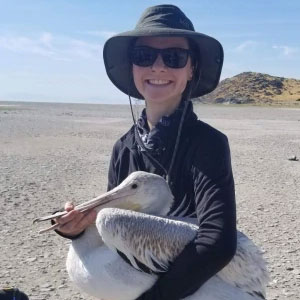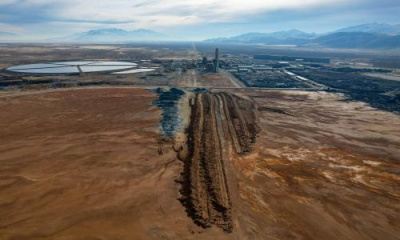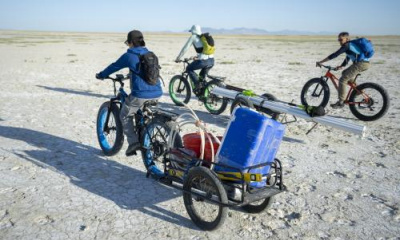This month’s Utah Clean Air Caucus meeting focused on Great Salt Lake, and the role it plays in Utah’s air quality.
Craig Miller, the manager at the Utah Division of Water Resources, gave an update on current lake levels, and how far water levels are below what they should be.
“4205 to 4198 [feet above sea level] is the sweet spot for the Great Salt Lake, where it covers most of its functions very well…and now we're at the 4188 - 4189 range. And I project it's probably going to go down to about 4188.9 or so before it stops dropping,” Miller said.
University of Utah professor Kevin Perry spoke about how lake level declines contribute to poor air quality across northern Utah. As Great Salt Lake shrinks, dust laced with carcinogenic arsenic and other metals, like lithium and copper, blows off the lake bed and onto the Wasatch Front. Using Owens Lake, which was pumped dry by the Los Angeles Department of Water and Power in the 1920s, as a case study, Perry said the best dust prevention is to put water back onto the dry lake bed.
“So far, they spent more than $2 billion, with a “b”, trying to mitigate the dust,” Perry explained. ”They've tried everything under the sun. They've tried snow fences, they’ve tried drip irrigation, they've even put gravel over significant portions. And what they've discovered with their $2 billion, is that the best solution for preventing the dust is putting water back in the lake.”
Marcelle Shoop, the Director of the Saline Lakes Program for the National Audubon Society, addressed funding that was allocated to Great Salt Lake protections earlier this year. She said that money is best used for improving water infrastructure and habitat protection.
“The legislature provided $40 million for water trust…and part of the purpose is to enhance water quality and quantity and retain existing flows. But it's also protecting and restoring the wetlands habitats around the lake in ways that can benefit the hydrology,” Shoop said.
Watch the full caucus meeting at https://www.facebook.com/groups/1487802214730249









